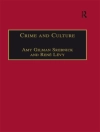Winner of the Western History Association’s 2009 Hal K. Rothman Award
Finalist in the Western Writers of America Spur Award for the Western Nonfiction Contemporary category (2008).
The San Francisco Bay Area is one of the world’s most beautiful cities. Despite a population of 7 million people, it is more greensward than asphalt jungle, more open space than hardscape. A vast quilt of countryside is tucked into the folds of the metropolis, stitched from fields, farms and woodlands, mines, creeks, and wetlands. In The Country in the City, Richard Walker tells the story of how the jigsaw geography of this greenbelt has been set into place.
The Bay Area’s civic landscape has been fought over acre by acre, an arduous process requiring popular mobilization, political will, and hard work. Its most cherished environments—Mount Tamalpais, Napa Valley, San Francisco Bay, Point Reyes, Mount Diablo, the Pacific coast—have engendered some of the fiercest environmental battles in the country and have made the region a leader in green ideas and organizations.
This book tells how the Bay Area got its green grove: from the stirrings of conservation in the time of John Muir to origins of the recreational parks and coastal preserves in the early twentieth century, from the fight to stop bay fill and control suburban growth after the Second World War to securing conservation easements and stopping toxic pollution in our times. Here, modern environmentalism first became a mass political movement in the 1960s, with the sudden blooming of the Sierra Club and Save the Bay, and it remains a global center of environmentalism to this day.
Green values have been a pillar of Bay Area life and politics for more than a century. It is an environmentalism grounded in local places and personal concerns, close to the heart of the city. Yet this vision of what a city should be has always been informed by liberal, even utopian, ideas of nature, planning, government, and democracy. In the end, green is one of the primary colors in the flag of the Left Coast, where green enthusiasms, like open space, are built into the fabric of urban life.
Written in a lively and accessible style, The Country in the City will be of interest to general readers and environmental activists. At the same time, it speaks to fundamental debates in environmental history, urban planning, and geography.
Содержание
Foreword: Thinking Globally, Acting Locally / William Cronon
Preface
Abbreviations
Introduction: Saving Graces
1. Out of the Woods: Stirrings of Conservation
2. Fields of Gold: Resources at Close Quarters
3. Moving Outdoors: Parks for the People
4. The Upper West Side: Suburbia and Conservation
5. The Green and the Blue: Saving the Bay and the Coast
6. Encounters with the Arch-Modern: Regional Planning and Growth Control
7. Fasten Your Greenbelt: Triumph and Trust Funds
8. Sour Grapes: The Fight for the Wine Country
9. Toxic Landscapes: Beyond Open Space
10. Green Justice: Reclaiming the Inner City
Conclusion: City and Country Reconciled?
Appendix
Notes
Bibliography
Index
Об авторе
Richard A. Walker is professor of geography and chair of the California Studies Center at the University of California, Berkeley. His publications include The New Social Economy: Reworking the Division of Labor and The Conquest of Bread: 150 Years of California Agribusiness.












